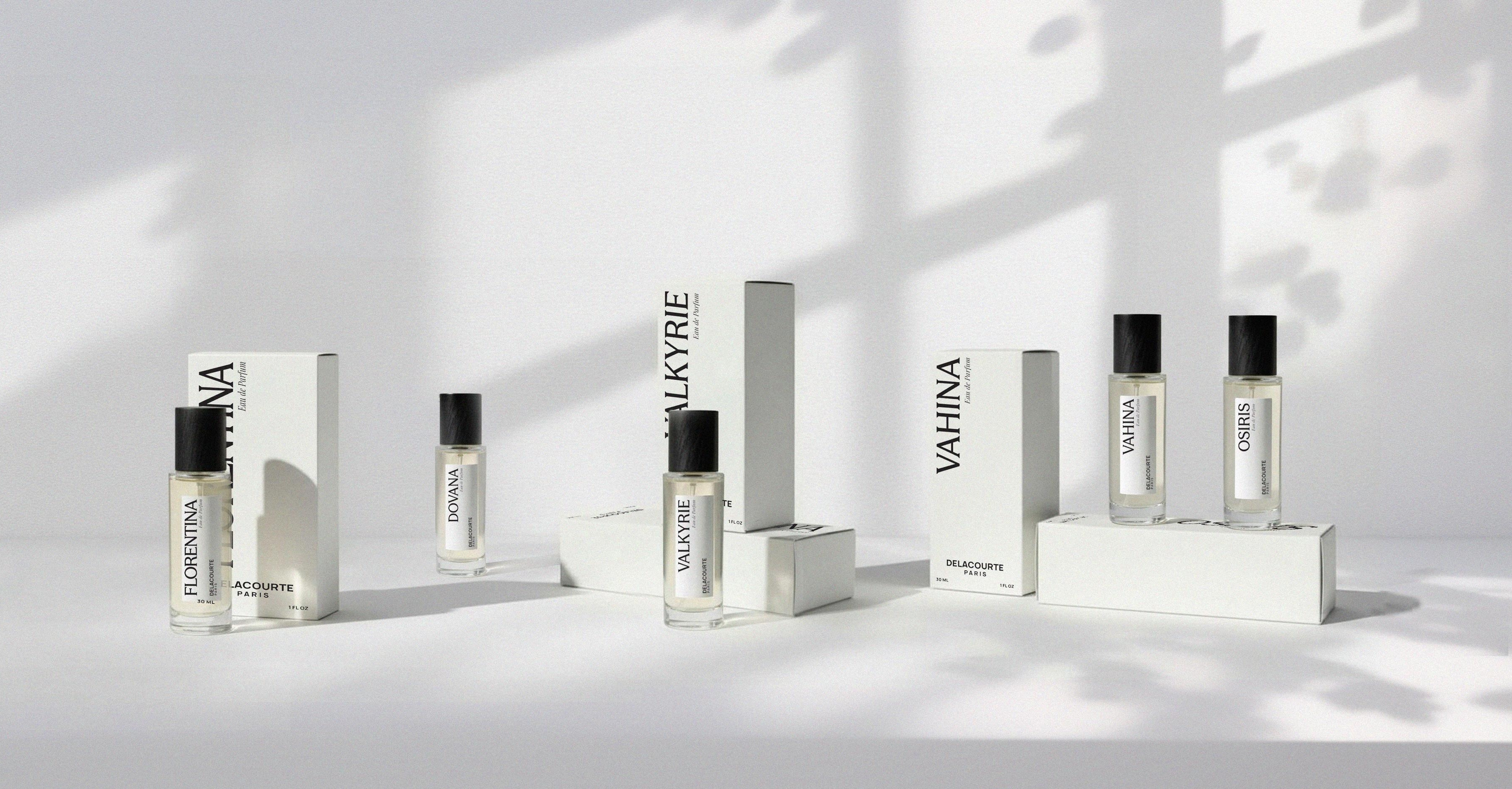The 6 olfactory families
- The hesperidae or citrus family (cf. Hesperidae family)
- The floral family (cf. Floral family)
- The amber or oriental family (cf. The amber or oriental family)
- The chypre family (cf. The chypre family)
- The woody family (cf. Woody family)
- The fern or fougère family (cf. Fern family)
Definition of aldehydes facet
- The origin of aldehydes
Aldehydes synthetic molecules were first discovered by the German chemist Baron Von Liebig in 1835. It became indispensable in perfume laboratories.
- Aldehydes in chemistry: a chain of carbons
In chemistry, an aldehyde is a particular group of atoms. Aldehydes are designated by a linear chain of carbons more or less long, for example C1, C2, C3 … C12. Traces of these aldehydes are also found in nature, especially in citrus fruit notes or some other fruity notes.
In 1903 Mr. Darzens discovered the way to stabilize certain aldehydes, in particular the aldehyde C12MNA, with its cold, very characteristic metallic, clean and slightly hesperidic smell.
- Aldehydes in perfumery: a category
In the language of perfumery, aldehydes refer to a specific category. Aldehyde notes are particularly well suited to the floral notes, the chypre or woody facet of a perfume by allowing to reinforce the trail of a perfume (cf. Where to apply your perfume?).
However, there are aldehydes that are named so but do not belong to this category. It is the case of these fruity notes:
- C 14: peach
- C 18: coconut
- C 16: raspberry
The first uses of aldehydes in perfumes
The first perfumes with this molecule were Quelques Fleurs d’Houbigant, a multi-floral bouquet, and L’Heure Bleue by Guerlain in 1912.
In 1921 Ernest Beaux, then the perfumer for Chanel, was the first one to use the aldehydes C10, C11, C12 MNA associated with the noble jasmine, the rose and the ylang-ylang to make an abstract bouquet. It was the incredible success of Chanel’s №5 that launched this new olfactory family.
It is notably said that Coco Chanel herself confided to Ernest Beaux, perfumer at the court of the Tsars in Russia, the desire to have a “modern and vibrant” perfume and gave her fetish number, the 5. Originally, the fragrance was composed of jasmine, rose and ylang-ylang. What makes the modernity of this perfume is the dosage of aldehydes. The story goes that by intentionally reinforcing these aldehydes by 1%, Ernest Beaux would have wanted the floral notes not to take over.
Another version tells that this dosage, which made the success of Chanel №5, was the result of an error. As for the name of the perfume itself, the famous number “5” suggests the number of tries it took before reaching the legendary formula! The mystery remains. Since 1921, many brands have in turn launched their “aldehyde floral” in the tradition of Chanel’s №5.
In 1960, Elnett from L’Oréal also used these aldehydes in the formula of its lacquer, which gives it this very recognizable perfume.
Aldehydes make flowers sing
Finally, we can say that aldehydes, these “laboratory flowers” give power and bring a great clean and metallic freshness, a shine, a vibration to a perfume. They make the flowers “sing” revealing modernity to the classic notes of a perfume.
Aldehyde fragrances
- Arpège Lanvin (1927)
- Liu Guerlain (1929)
- Je Reviens Worth (1932)
- Fleurs de Rocaille Caron (1933)
- Madame Rochas Rochas (1960)
- Calèche Hermès (1961)
- Diva Ungaro (1965)
- Chamade Guerlain (1969)
- Calandre Paco Rabanne (1969)
- Rive Gauche Yves Saint Laurent (1971)
- First Van Cleef (1976)
- White Linen Estée Lauder (1978)
- Courrèges in Blue Courrèges (1983)
- La Pausa Les Exclusifs Chanel (2007)
- Beige Les Exclusifs Chanel (2009)
- Izia Sisley (2017)
Sylvaine Delacourte fragrances
Discover Sylvaine Delacourte’s brand with her Orange Blossom, Musk and Vanilla Collections. You can try them thanks to the Discovery Boxes (5 Eaux de Parfum x 2 ml) and rediscover these raw materials as you have never smelled them before.

